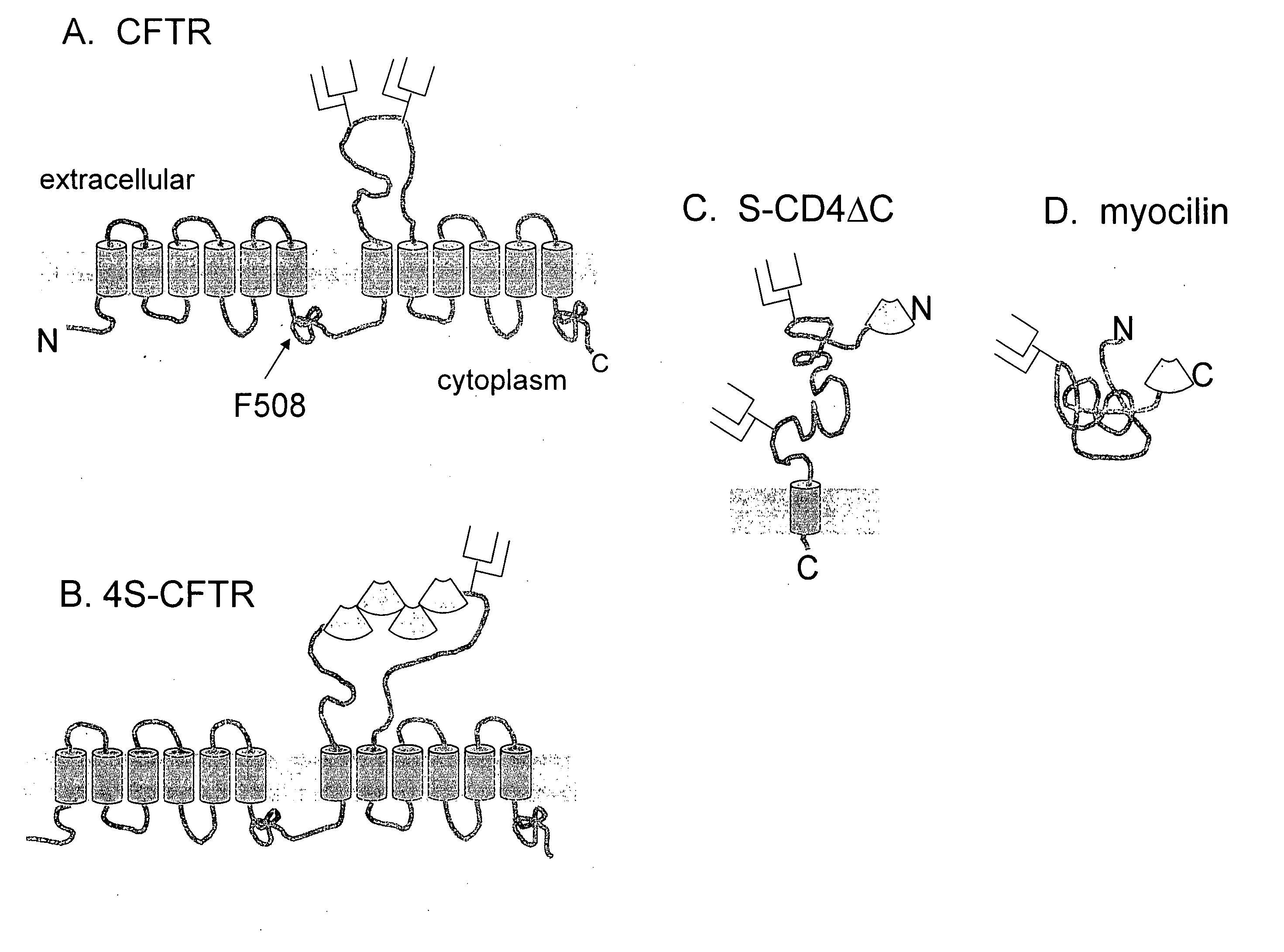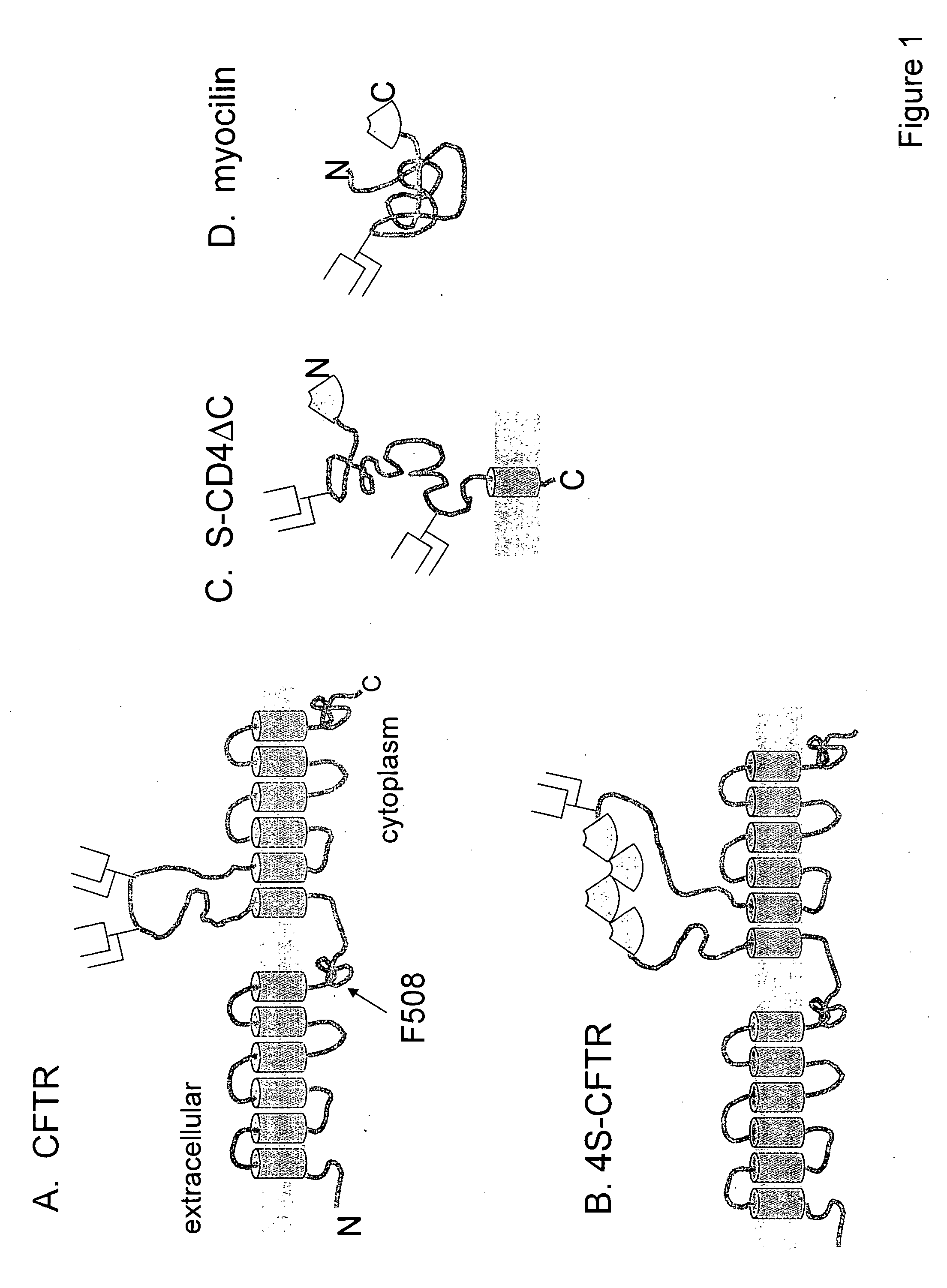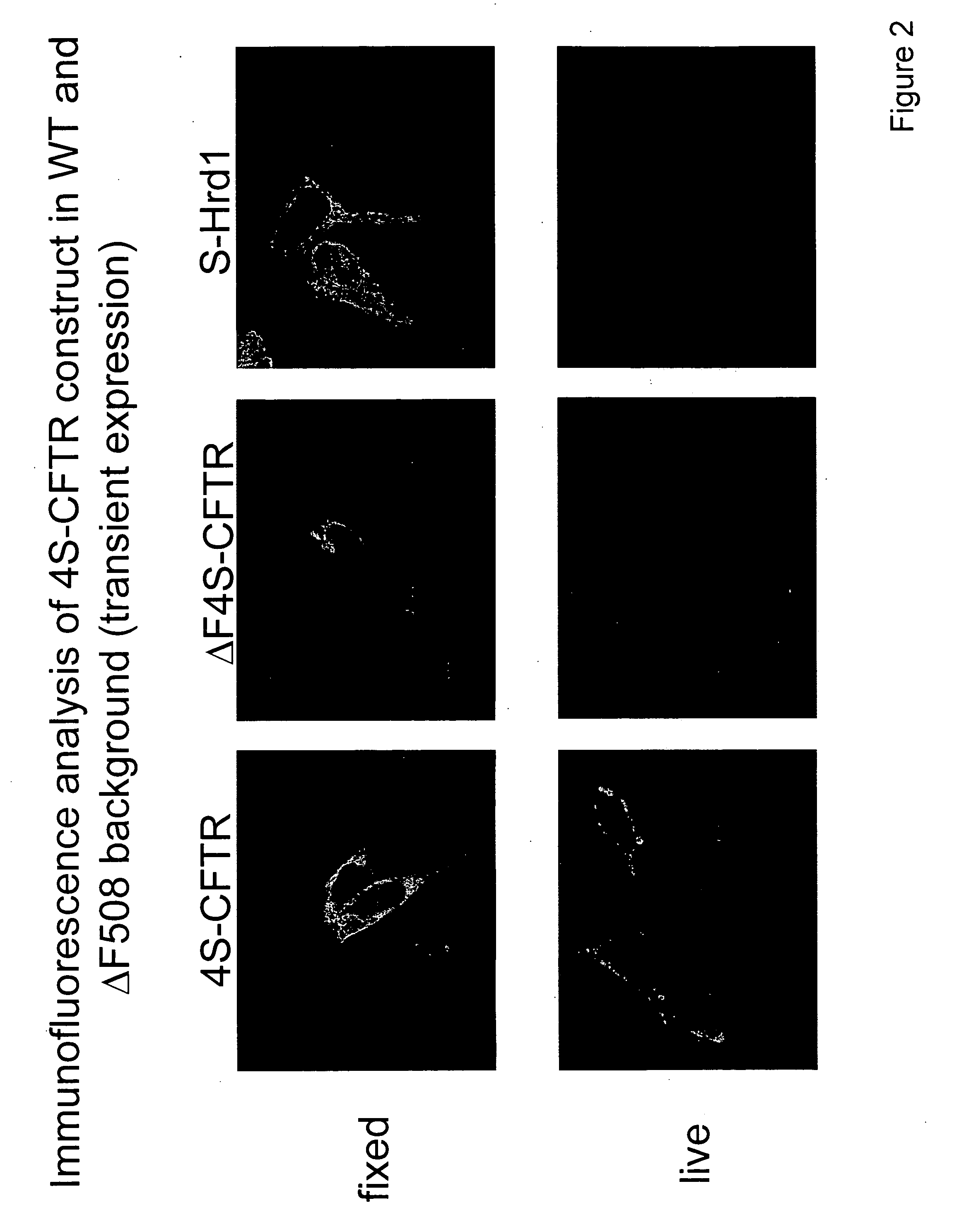Compositions and methods for high throughput screening of pharmacological chaperones
a technology of pharmacological chaperones and compositions, applied in the field of compositions and methods for high throughput screening of pharmacological chaperones, can solve problems such as sterical blockag
- Summary
- Abstract
- Description
- Claims
- Application Information
AI Technical Summary
Problems solved by technology
Method used
Image
Examples
example 1
[0103] Cell-based screen for high copy suppressors of ΔF508 misfolding. A genetic screen in mammalian cells was designed to identify critical genes whose functions could promote correct folding and cell surface expression of ΔF508-CFTR protein. The underlying assumption is that either direct overexpression of a protein that facilitates ΔF508-CFTR folding, or expression of a gene fragment that decreases expression or interferes with the function of genes that impede maturation of ΔF508-CFTR, will result in the elevated expression of the ΔF508-CFTR protein at the cell surface.
[0104] A fusion protein of green fluorescent protein (GFP) and ΔF508-CFTR was generated, containing a FLAG epitope in the 4th extracellular loop. CFTR-FLAG has been characterized before and was found to be very similar to CFTR in terms of its functional, biochemical properties and intracellular processing. It was verified that the intracellular processing and turnover of the GFP-ΔF508-CFTR fusion protein is simi...
example 2
[0106] No high affinity ligands or chemical chaperones have previously been identified for ΔF508-CFTR. An RNAase S assay is used to screen for facilitators of ΔF508-CFTR surface expression.
[0107] Generation of reporters bearing cell surface displayed S-tags. Wild-type and ΔF508 CFTR were prepared with an S-tag sequence introduced into various positions, as shown in Table 1. PCR mutagenesis was used to introduce a linker containing Nhe I (5′) and SacII (3′) restriction sites into human CFTR cDNA at four different insertions points, designated A-D. To insert S-tags, the recominant plasmids were digested with NheI and SacI and ligated together with double stranded oligonucleotides encoding S-tags and glycine-rich flanking sequences. Double tandem S-tag insertions were constructed by ligating oligonucleotides encoding double S-tag sequences. Longer S-tag repeats were constructed by annealing single and double S-tag encoding oligonucleotides together and screening for restriction fragme...
example 3
[0115] Myocilin and mutants thereof, P370L and D380A were S-tagged, where the S-tag sequence was inserted after the C-terminal residue (M504). The S-tagged protein was expressed by transient transfection in HEK-293 cells. The cells were grown at 37 for 48 hrs then transferred into serum-free media and further cultured for 24 hrs at 30° or 37°. Culture media was collected and analyzed by western blotting using myocilin antibody (10-20 μl FIG. 11A) or by RNAase analysis (FIG. 11B). For RNAase analysis, 8 μl of culture medium was added to 200 μl reaction containing 10 nM substrate and 2.5 pmol S-protein in Hank's balanced salt solution (HBSS) (this is the same condition used in the assay in ex. 2).
[0116] We have tagged myocilin with S-tag and have used the enzymatic recombination assay to detect it in media. The data indicate that the assay can detect secreted myocilin in less than 1 μl of media; we use this assay to observe rescue by low temperature incubation.
PUM
| Property | Measurement | Unit |
|---|---|---|
| volume | aaaaa | aaaaa |
| volume | aaaaa | aaaaa |
| pharmaceutical composition | aaaaa | aaaaa |
Abstract
Description
Claims
Application Information
 Login to View More
Login to View More - R&D
- Intellectual Property
- Life Sciences
- Materials
- Tech Scout
- Unparalleled Data Quality
- Higher Quality Content
- 60% Fewer Hallucinations
Browse by: Latest US Patents, China's latest patents, Technical Efficacy Thesaurus, Application Domain, Technology Topic, Popular Technical Reports.
© 2025 PatSnap. All rights reserved.Legal|Privacy policy|Modern Slavery Act Transparency Statement|Sitemap|About US| Contact US: help@patsnap.com



